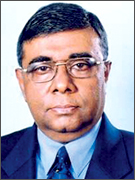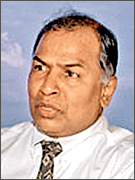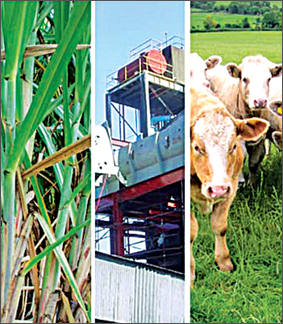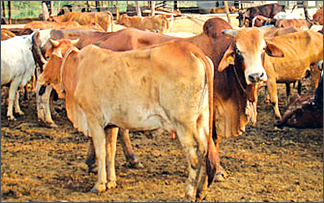Self-sufficiency in fruits, vegetables not far off -Agri Business
Council
by Shirajiv SIRIMANE
 |
 |
| Sarath de Silva |
Ariyaseela Wickramanayake |
The end of the war and the recent election victories for the
government and President Mahinda Rajapaksa have paved the way for
creating a strong government and Sri Lanka can now look at achieving
self sufficiency in rice, fruits and vegetables, dairy industry and many
other areas.
With the liberation of the North East, the Lanka land bank has
increased opening up vistas of opportunities for the agricultural
sector. In addition it is also providing the much needed work for the
industry. The opening of the A-9 Highway, the removal of check points
and the construction of rail track to Jaffna would enable the Northern
products to reach the South more economically and thus minimise post
harvest loss.
Self sufficiency in paddy is a dream Sri Lanka can now look forward
to by the end of this year.
One of the main reasons for this illusive dream to come true is the
government’s highly acclaimed idea of providing Urea subsidy for the
industry.
One of the leading agriculturists in Sri Lanka Sarath de Silva says
that similarly Sri Lanka could reach the self sufficiency in fruits and
vegetables in three years. He said that the current export earnings are
around Rs. 7 billion and their aim is to increase this to Rs. 15 billion
in two years. “And bulk of the export earning in the future would be
from the agricultural sector,” he said.
De Silva, who is the immediate past president of the National Agri
Business Council said that Sri Lanka’s agri potential is still under
played.
“We have a ready global market and the country has to only feed it to
get better returns,” he said.
Sri Lanka has more opportunities to export tea and steps should be
taken to tap this potential to increase export earnings.
With the global warming and drought in most parts of the world, the
leading agricultural suppliers have taken a beating and therefore Sri
Lanka should also exploit this opportunity.
He said that he had introduced several new fruit and vegetable
varieties such as dragon fruits, Thai guavas, rose apple, year-around
drumsticks, salads, capsicum to the Sri Lankan market and now they are
sold in super markets.
“We must now produce them in larger numbers so that they could be
exported,” he said.
De Silva who is also the President of the National Chamber of
Exporters said that like Ceylon Tea, Sri Lankan pineapples are also
world famous and there is a global demand for it. “Unfortunately we can
not meet the demand,” he lamented. Similarly, Sri Lanka can not meet
even the local demand for cashew nuts.
He said that some of the tea estates owned by the Janatha Estate
Development Board and the State Plantations are now reaching
superannuation stage. “Government must now take action to either replant
or grow other crops in these estates,” he said.
|

Suger Cane and some machinery used at the factory. |
He said this government has given the best deal to the farmers.
“However more benefits should be given for the agricultural sector, as
done by India. “This can come through subsidies and removal of unwanted
taxes during the import of machinery,” he said.
“I am sure with more lands being cultivated in the North and the
East, Sri Lanka can reach self sufficiency in fruit and vegetables in
2015,” he added.
Meanwhile the biggest private investor in the livestock industry,
Ariya Wickramanayake said that Sri Lanka can reach self sufficiency in
milk in three years saving millions of rupees to the country.
He said he opened Sri Lanka’s largest dairy in Palwatte recently.
This also has the country’s largest cattle feed factory which could
produce 50, 000 metric tons per day.
Wickramanayake who also owns Master Divers said this facility in
Pelwatte will help Sri Lanka’s dream of achieving self-sufficiency in
milk soon. “To achieve this goal we do not have to import cows. “Lanka’s
cattle population is around 1.5 million and less than 300, 000 cows are
being milked.”
He said that when the government banned the slaughter of cows the
milk production which was 15 percent jumped to 35 percent. Raising the
purchase price of a litre of milk to Rs. 40 has also encouraged the
farmer.
|

Cattle at the Pelwatte Farm |
New Zealand and India are the world’s largest milk suppliers while
China Bangladesh and Sri Lanka are the largest buyers of milk powder
with over 25 percent of New Zealand’s GDP coming from milk production.
It’s also interesting to note that Sri Lanka spends nearly US$ 1
billion for the import of milk powder and sugar when they can be locally
produced.
He said that Sugar too is now being locally manufactured and the
country will soon achieve self sufficiency in this sector too.
The government must also encourage more investors specially in the
North and the East to invest in these sectors,” he said. |

